Traditionalist Issues
 |
 |
 |
 |
 |
 |
 |
Dialogue Mass - CLI
Theology of the Encounter & Primacy of Love
It is well known that certain progressivists had been targeting seminaries years before Vatican II, working like termites on the inside to weaken and undermine the dominant structure of Scholasticism. Fr. Peter Henrici, S.J., averred that this was the case in Jesuit seminaries where professors paid lip service to papal mandates and students went through the motions of “thumbing through” the Manuals, while the method and principles of St. Thomas Aquinas were openly scorned and held in contempt. 1
At the same time, Fr. Henrici assures us, certain modernist texts were secretly passed around among the students, e.g. Henri de Lubac’s books, The Supernatural and Corpus Mysticum. There is no reason to believe that the activities of predatory stalkers seeking victims among trainee priests were unique to Jesuit seminaries: We have seen in Part 139 how the young Joseph Ratzinger was influenced and led astray by his neo-modernist mentor in his seminary days. None of that proves that Scholasticism itself was decadent, as Francis had claimed, but that subversive attempts to overthrow it were being allowed to succeed by progressivist Bishops.
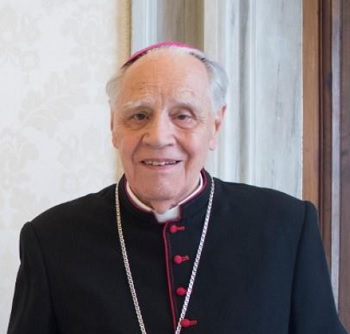 Francis’s caricature of the Scholastic method employed in seminaries served to bolster the progressivists’ agenda – to discredit the Church’s “perennial philosophy” so as to make way for the post-Vatican II “New Evangelization.” This is obvious from a speech he made at a meeting of the Pontifical Council for the Promotion of the New Evangelization in 2015, where he said:
Francis’s caricature of the Scholastic method employed in seminaries served to bolster the progressivists’ agenda – to discredit the Church’s “perennial philosophy” so as to make way for the post-Vatican II “New Evangelization.” This is obvious from a speech he made at a meeting of the Pontifical Council for the Promotion of the New Evangelization in 2015, where he said:
“The catechesis, as a component of the process of evangelization, needs to go beyond the simple realm of Scholastics, in order to educate believers, beginning with children, to encounter Christ, living and working in his Church.” [Emphasis in the original]
We can take it as read that adopting the new “theology of encounter” meant leaving the “perennial philosophy” behind, for Francis explained that the new catechesis was needed to take the Church along what he termed “yet uncharted” paths – presumably where his “God of surprises”2 lurks around every corner.
There is, however, nothing genuinely Catholic in the current catechesis, for Francis has led us back to the teaching of Fr. George Tyrrell who maintained that Scholasticism was radically deficient as a means of presenting the truths of Revelation and was useless for modern times. It follows that Scholasticism would play no part in the “New Evangelization.” For both Francis and Tyrrell, knowledge of God derives from the lived experience of believers who encounter Him directly.
According to Francis: “The definitive aim of catechesis is to put people not only in touch, but also in communion and intimacy, with Jesus Christ.”3
No mention is made of the indispensable role of the Ecclesia Docens in the area of catechesis. So, his words must be interpreted against the background of the neo-Modernism he embraced, where there are no absolute precepts or moral imperatives, and where everything is up for discussion.
Ecclesia Docens replaced by an ill-defined 'discernment'
One of the major planks of Francis’s new approach was his heavy emphasis on a phenomenon he termed “discernment” which he preaches at every opportunity. Whatever he meant by this term, we can be sure that it had nothing in common with the practice of casuistry that had traditionally been used in the Church as a trusted and efficient method to solve problems of conscience by applying general principles of morality to concrete cases.
The following example of his thinking on this issue illustrates the distinctly unhelpful and confusing nature of his advice to priests in dealing with matters of conscience:
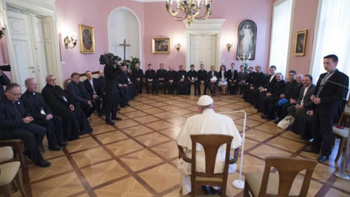 “Many are asking: ‘can you do this or can you not?’ That’s all. And many people leave the confessional disappointed. Not because the priest is bad, but because the priest doesn’t have the ability to discern situations, to accompany them in authentic discernment. They don’t have the needed formation…
“Many are asking: ‘can you do this or can you not?’ That’s all. And many people leave the confessional disappointed. Not because the priest is bad, but because the priest doesn’t have the ability to discern situations, to accompany them in authentic discernment. They don’t have the needed formation…
“We need to form future priests not to general and abstract ideas, which are clear and distinct, but to this keen discernment of spirits so that they can help people in their concrete life. We need to truly understand this: In life not all is black on white or white on black. No! The shades of grey prevail in life. We must them teach to discern in this grey area." 4
But the criteria for true discernment in line with the teachings of the great moralist and Doctor of the Church, St. Alphonsus Liguori, were already provided in the “Manualist tradition” that Francis categorically rejected. Moreover, Francis has not provided any objective criteria, but has left the process of discernment open to manipulation and abuse. In other words, he is allowing the Church to be run on subjective lines, thus creating a global situation of moral relativism, insecurity and mutual distrust.
Finally, irrefutable proof of Francis’s debt to Tyrrell and the early modernists can be found in one of Tyrrell’s letters describing his version of Catholicism that he called “the new wine that eventually burst the old scholastic bottles.” This new religion is based on the “primacy of love” over concern for the Truth, which Tyrrell attributed to Our Lord:
“He was not explicitly a theologian or a revealer of intellectual orthodoxy, but the diffuser of a spirit, or love, which implied a more liberal theology, a wider and worthier conception of God and of man, and of their mutual relations.” 5
One cannot fail to notice that this description also captures in a nutshell Vatican II’s commitment to a new religion that “liberated” the Church from Catholic Tradition, adulterating the Faith, subverting her Divine Constitution, dispensing with her discipline and making Morals adaptable.
Nor can one deny that it came from the fevered mind of George Tyrrell who proudly asserted his complete agreement with his fellow modernist and excommunicate, Alfred Loisy: “Mentally, I am heart and soul with Abbé Loisy and his school.” 6
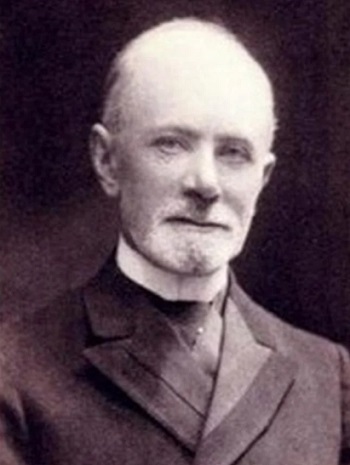 But it was the goal of Tyrrell, Loisy and all the modernists to usher in a universal brotherhood – the brainchild of Masonry – united around themes of humanitarian ideals, environmentalism and “ecumenism” which would cancel out and replace the Catholic Church. These are the same deviations from Catholic Truth that were welcomed into the Council presided over by John XXIII and Paul VI and have progressively developed to the present day under the tutelage of their successors to the Chair of Peter.
But it was the goal of Tyrrell, Loisy and all the modernists to usher in a universal brotherhood – the brainchild of Masonry – united around themes of humanitarian ideals, environmentalism and “ecumenism” which would cancel out and replace the Catholic Church. These are the same deviations from Catholic Truth that were welcomed into the Council presided over by John XXIII and Paul VI and have progressively developed to the present day under the tutelage of their successors to the Chair of Peter.
At least, Loisy got one thing right when he predicted: “The heresies of today are part of the orthodoxy of tomorrow”.7
He could not have said a truer word, if we put orthodoxy in inverted commas. We cannot, however, leave the last word to Loisy, Tyrrell, the Vatican II Popes or Francis.
The happy state of living within reach of the traditional Mass and Sacraments with perhaps access to a Catholic school untainted by modernist-inspired teaching, does not come about spontaneously or by chance. Freedom to practise the Catholic Faith in a hostile world is never free of charge. In History, it was gained at the price of blood in the face of persecution by those outside the Faith.
These days, it comes mostly through a dry martyrdom inflicted on traditionalists by their own Hierarchy. In any case, it must be constantly fought for to prevent it from being taken away by those who wish to seize it from us, and then guarded religiously from future assault. Paradoxically, this freedom was the first casualty of the untraditional concept of “Religious Liberty” inaugurated by Vatican II.
Now that the Vatican II reforms have failed collectively to preserve the Faith, the antidote – which would have prevented the modernist heresies from spreading in the first place – is as obvious as it is logical: faithfulness to the teaching and practice of Tradition.
Continued

At the same time, Fr. Henrici assures us, certain modernist texts were secretly passed around among the students, e.g. Henri de Lubac’s books, The Supernatural and Corpus Mysticum. There is no reason to believe that the activities of predatory stalkers seeking victims among trainee priests were unique to Jesuit seminaries: We have seen in Part 139 how the young Joseph Ratzinger was influenced and led astray by his neo-modernist mentor in his seminary days. None of that proves that Scholasticism itself was decadent, as Francis had claimed, but that subversive attempts to overthrow it were being allowed to succeed by progressivist Bishops.

Fr. Peter Henrici revealed progressivist tactics used to infiltrate seminaries
“The catechesis, as a component of the process of evangelization, needs to go beyond the simple realm of Scholastics, in order to educate believers, beginning with children, to encounter Christ, living and working in his Church.” [Emphasis in the original]
We can take it as read that adopting the new “theology of encounter” meant leaving the “perennial philosophy” behind, for Francis explained that the new catechesis was needed to take the Church along what he termed “yet uncharted” paths – presumably where his “God of surprises”2 lurks around every corner.
There is, however, nothing genuinely Catholic in the current catechesis, for Francis has led us back to the teaching of Fr. George Tyrrell who maintained that Scholasticism was radically deficient as a means of presenting the truths of Revelation and was useless for modern times. It follows that Scholasticism would play no part in the “New Evangelization.” For both Francis and Tyrrell, knowledge of God derives from the lived experience of believers who encounter Him directly.
According to Francis: “The definitive aim of catechesis is to put people not only in touch, but also in communion and intimacy, with Jesus Christ.”3
No mention is made of the indispensable role of the Ecclesia Docens in the area of catechesis. So, his words must be interpreted against the background of the neo-Modernism he embraced, where there are no absolute precepts or moral imperatives, and where everything is up for discussion.
Ecclesia Docens replaced by an ill-defined 'discernment'
One of the major planks of Francis’s new approach was his heavy emphasis on a phenomenon he termed “discernment” which he preaches at every opportunity. Whatever he meant by this term, we can be sure that it had nothing in common with the practice of casuistry that had traditionally been used in the Church as a trusted and efficient method to solve problems of conscience by applying general principles of morality to concrete cases.
The following example of his thinking on this issue illustrates the distinctly unhelpful and confusing nature of his advice to priests in dealing with matters of conscience:

Francis to the Krakow Jesuits in 2016: ‘Life is not black & white; we have to discern the grey’
“We need to form future priests not to general and abstract ideas, which are clear and distinct, but to this keen discernment of spirits so that they can help people in their concrete life. We need to truly understand this: In life not all is black on white or white on black. No! The shades of grey prevail in life. We must them teach to discern in this grey area." 4
But the criteria for true discernment in line with the teachings of the great moralist and Doctor of the Church, St. Alphonsus Liguori, were already provided in the “Manualist tradition” that Francis categorically rejected. Moreover, Francis has not provided any objective criteria, but has left the process of discernment open to manipulation and abuse. In other words, he is allowing the Church to be run on subjective lines, thus creating a global situation of moral relativism, insecurity and mutual distrust.
Finally, irrefutable proof of Francis’s debt to Tyrrell and the early modernists can be found in one of Tyrrell’s letters describing his version of Catholicism that he called “the new wine that eventually burst the old scholastic bottles.” This new religion is based on the “primacy of love” over concern for the Truth, which Tyrrell attributed to Our Lord:
“He was not explicitly a theologian or a revealer of intellectual orthodoxy, but the diffuser of a spirit, or love, which implied a more liberal theology, a wider and worthier conception of God and of man, and of their mutual relations.” 5
One cannot fail to notice that this description also captures in a nutshell Vatican II’s commitment to a new religion that “liberated” the Church from Catholic Tradition, adulterating the Faith, subverting her Divine Constitution, dispensing with her discipline and making Morals adaptable.
Nor can one deny that it came from the fevered mind of George Tyrrell who proudly asserted his complete agreement with his fellow modernist and excommunicate, Alfred Loisy: “Mentally, I am heart and soul with Abbé Loisy and his school.” 6

Alfred Loisy, excommunicated, whose works were on the Index of Forbidden Books, inspired Tyrrell
At least, Loisy got one thing right when he predicted: “The heresies of today are part of the orthodoxy of tomorrow”.7
He could not have said a truer word, if we put orthodoxy in inverted commas. We cannot, however, leave the last word to Loisy, Tyrrell, the Vatican II Popes or Francis.
The happy state of living within reach of the traditional Mass and Sacraments with perhaps access to a Catholic school untainted by modernist-inspired teaching, does not come about spontaneously or by chance. Freedom to practise the Catholic Faith in a hostile world is never free of charge. In History, it was gained at the price of blood in the face of persecution by those outside the Faith.
These days, it comes mostly through a dry martyrdom inflicted on traditionalists by their own Hierarchy. In any case, it must be constantly fought for to prevent it from being taken away by those who wish to seize it from us, and then guarded religiously from future assault. Paradoxically, this freedom was the first casualty of the untraditional concept of “Religious Liberty” inaugurated by Vatican II.
Now that the Vatican II reforms have failed collectively to preserve the Faith, the antidote – which would have prevented the modernist heresies from spreading in the first place – is as obvious as it is logical: faithfulness to the teaching and practice of Tradition.
Continued
- Peter Henrici SJ, "The Council’s Development to Maturity," Communio, vol. 17, Winter 1990, p. 85.
- An early example, if not the first, of the expression “God of surprises,” appeared in a book of that name by Fr. Gerard Hughes, SJ. It forms a recurring theme in the sermons of Pope Francis. See, for example, Morning Meditation in the Chapel of the Domus Sanctae Marthae, ‘The God of Surprises’, October 13, 2014, L'Osservatore Romano, October 17, 2014, and Morning Meditation in the Chapel of the Domus Sanctae Marthae, "The God of Surprises," May 8, 2017, L'Osservatore Romano, May 26, 2017.
- Congregation for the Clergy, General Directory for Catechesis 2020 § 80.
- Francis, Q&A session with Polish Jesuits at a private meeting during World Youth Day in Krakow, July 30, 2016, published in Rome on August 26, 2016 in the Jesuit Journal, La Civiltà Cattolica by its Editor, Fr. Antonio Spadaro who was present.
- G. Tyrrell, "To Dr. Zdziechowski," June 24, 1903 in George Tyrrell’s Letters, selected and edited by M. D. Petre, London: T. Fisher Unwin Ltd., 1920, pp. 97-98.
- Ibid., p. 99.
- Alfred Loisy, Mémoires pour Servir à l'Histoire Religieuse de Notre Temps, Paris: Émile Nourry, 3 volumes, vol. 1, 1931, p. 135.
Posted July 11, 2025

______________________
______________________
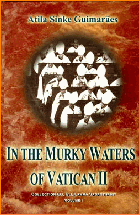 Volume I |
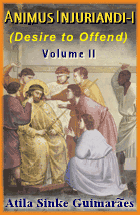 Volume II |
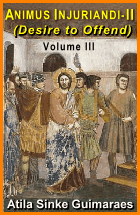 Volume III |
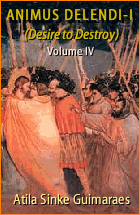 Volume IV |
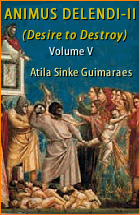 Volume V |
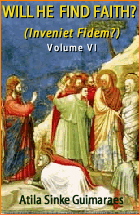 Volume VI |
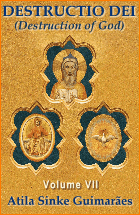 Volume VII |
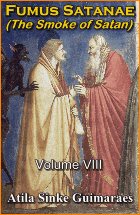 Volume VIII |
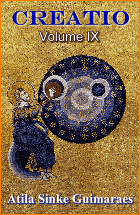 Volume IX |
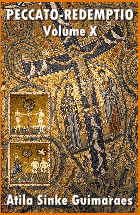 Volume X |
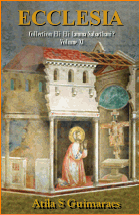 Volume XI |
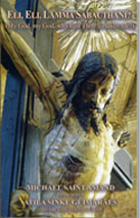 Special Edition |


